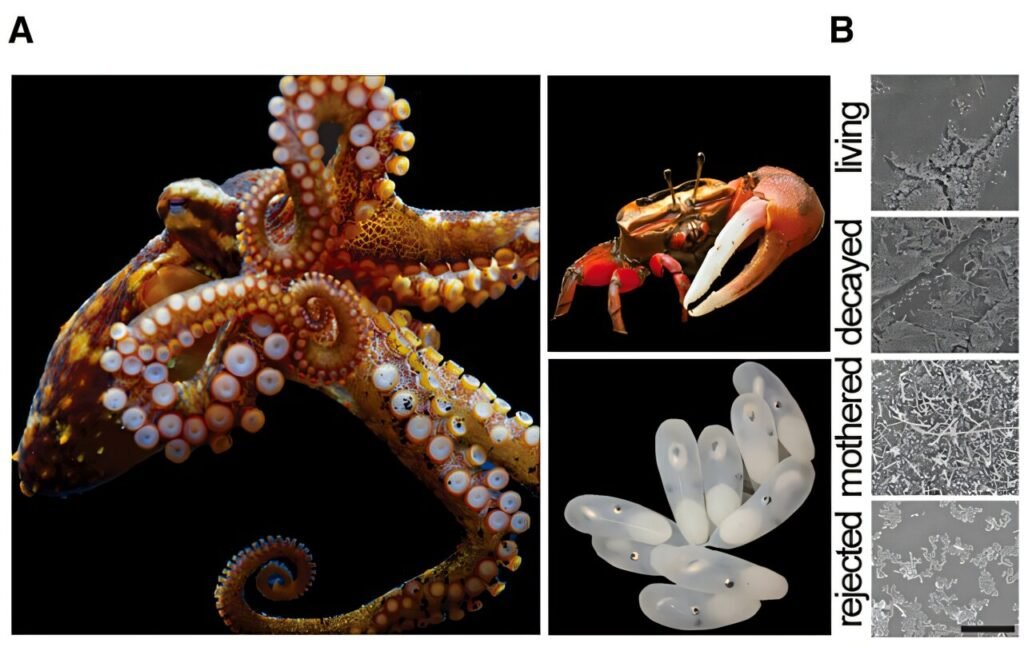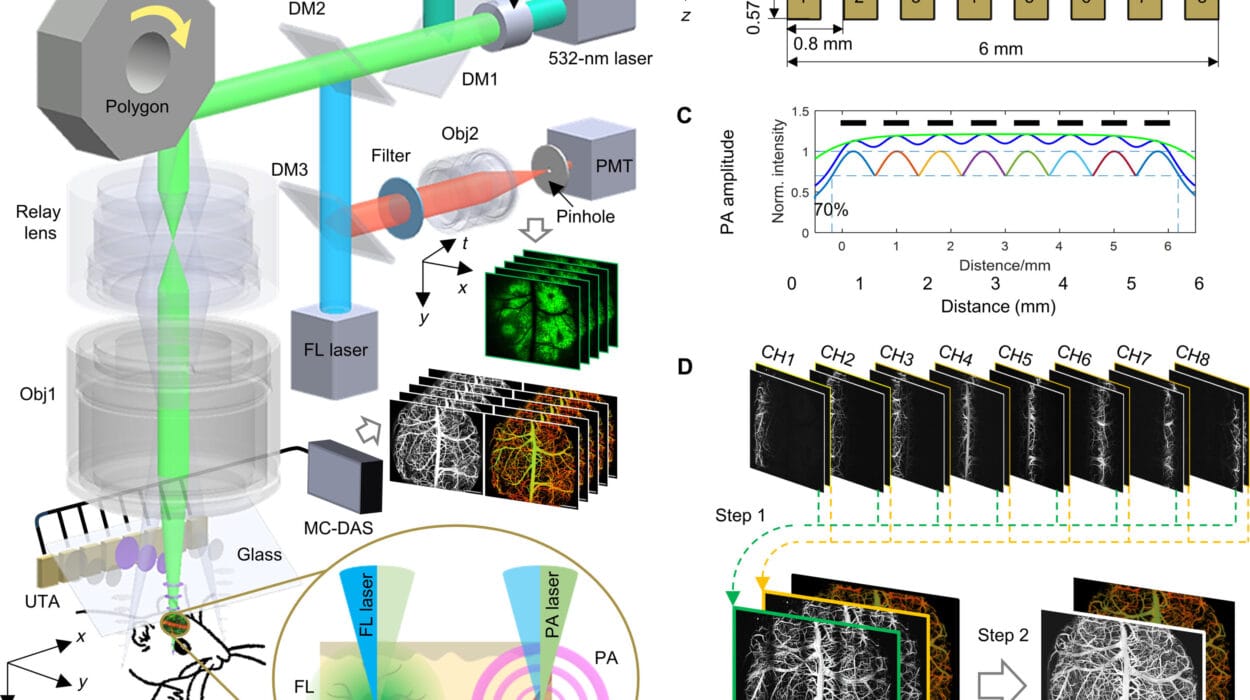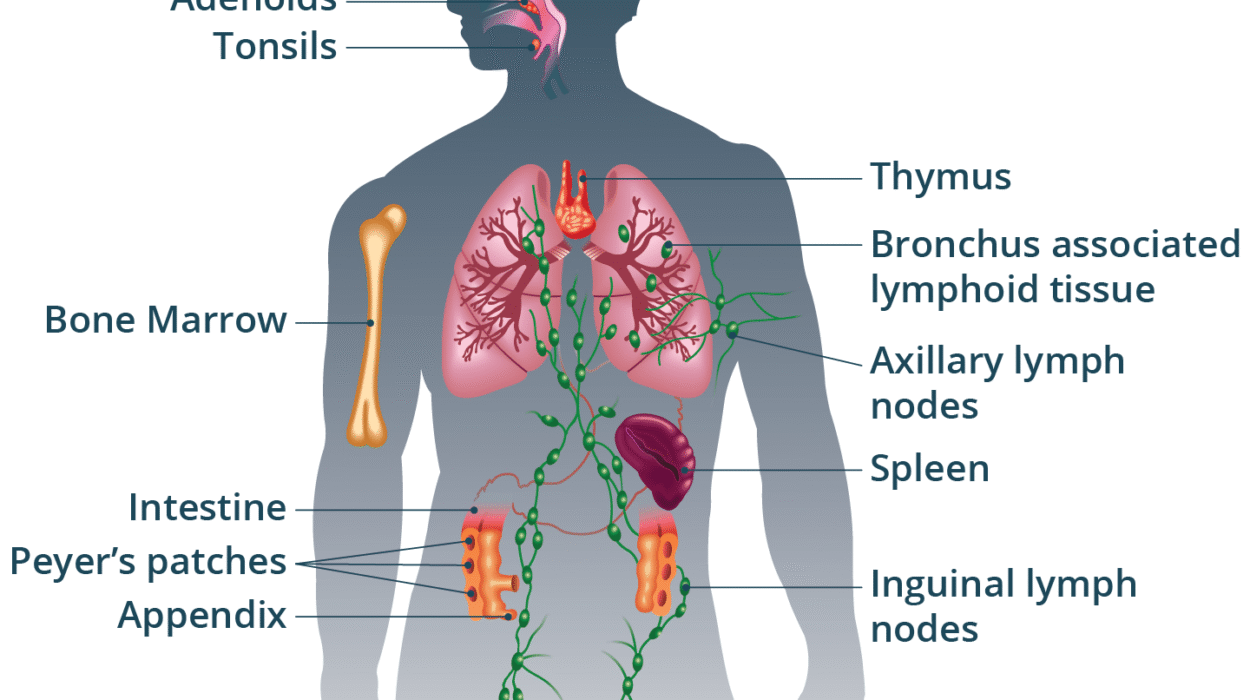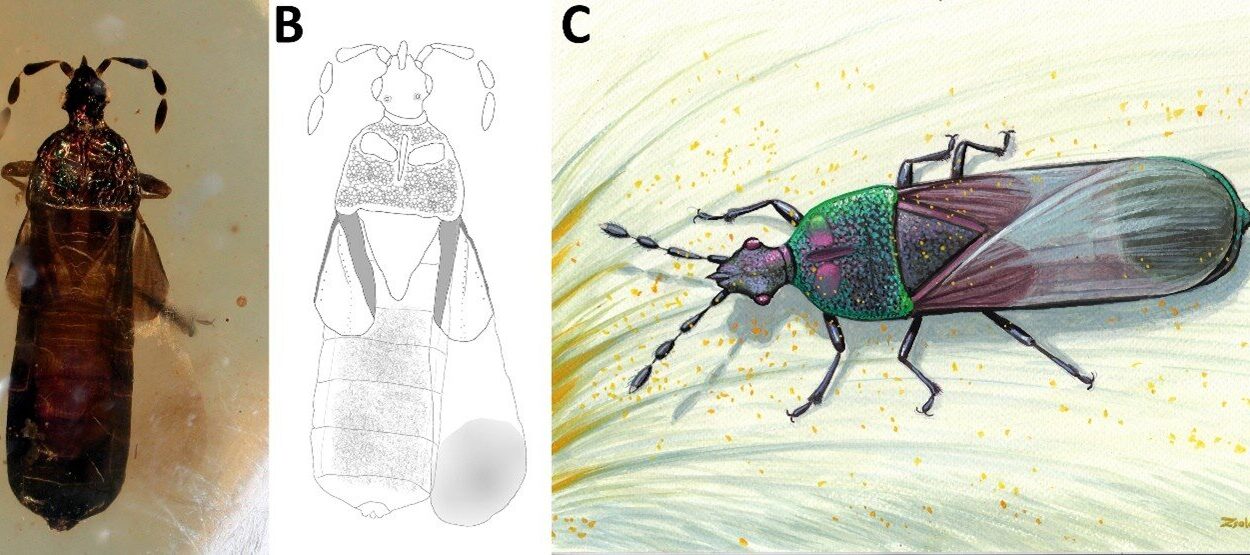In the dark, hidden crevices of the ocean floor, where sight is often of little use, a quiet evolutionary marvel has been at work. The octopus, that enigmatic and eerily intelligent shape-shifter of the sea, has just revealed another extraordinary secret: it can taste danger—not with its mouth, but with the very arms it explores the world with.
A team of molecular and cellular biologists and chemists from Harvard University and the University of California, San Diego, has uncovered a striking new sensory capability in octopuses: specialized taste sensors embedded in their sucker cups that allow them to detect harmful or decaying chemicals. Their study, published in the journal Cell, focuses on the California two-spot octopus (Octopus bimaculoides) and offers fresh insight into just how finely tuned these animals are to their chemical surroundings.
An Ancient Creature with a Modern Mystery
Octopuses have long fascinated scientists and ocean lovers alike. With their maze-like nervous systems, color-shifting camouflage, and alien-like morphology, they often feel more like science fiction than fact. Yet it’s precisely their strangeness that has kept researchers coming back to study them.
Previous observations had already shown that octopuses are masterful tactile hunters. They reach into dark crevices, under rocks, or even inside bottles, seemingly knowing which object holds prey and which doesn’t. They’ve been seen rejecting rotting food and even ejecting spoiled eggs from their clutches. But what allowed them to detect these threats, especially in the absence of sight or smell?
That mystery led the team, led by Harvard’s Nicholas Bellono and UC San Diego’s Sreekanth Chalasani, to turn their microscopes and chemical analyzers toward the octopus’s most iconic appendage—its suction-cup-lined arms.
The Egg-Tasting Experiment
The research began with a curious observation: female California two-spot octopuses, when guarding their nests, would gently run their arms across their egg clusters and then, without hesitation, pluck certain eggs and cast them aside. How, the researchers wondered, could the mothers discern which embryos were no longer viable?
To find out, they captured this behavior on camera in controlled laboratory conditions and then collected the discarded eggs. Using electron microscopes, they examined the eggs’ outer surfaces and discovered they were teeming with microbial life—far more than viable, healthy eggs.
“That was our first clue,” said Bellono. “There was something the mothers were detecting—something chemical—on the surface of those eggs that allowed them to make a judgment, with precision, through touch alone.”
From there, the researchers isolated the microbial species and chemical compounds present on the spoiled eggs. They identified about 300 distinct microbial compounds that appeared far more frequently on bad eggs than good ones.

The Suckers That Smell and Taste
The next step was to find out how the octopus was detecting those microbial chemicals. The researchers turned to the octopus’s arm suckers—specifically the cells lining the suckers’ rims, known to be involved in tactile sensing. But what they discovered was far more than just touch: these suckers also harbor a special class of sensory cells that act more like a nose and tongue combined.
The team engineered isolated versions of these sucker sensor cells in petri dishes and then exposed them to the chemical compounds found on the spoiled eggs. The result was striking. The cells fired strong activity signals when exposed to compounds associated with decay or microbial breakdown—but not when exposed to chemical samples from healthy eggs.
“Essentially, the suckers are tasting and smelling simultaneously,” explained Chalasani. “It’s a localized form of chemosensation—much like a tongue on each arm. But it’s more than just flavor—it’s danger detection.”
This was further confirmed when the team tested how octopuses responded to crabs coated in similar decaying compounds. The animals refused to eat the crabs, pushing them away with a distinct gesture that seemed to echo their egg-rejection behavior.
A Superpower in the Deep
This ability to chemically assess their environment through touch gives octopuses a powerful advantage, especially in the murky depths or tight crevices they often hunt in. It allows them to make rapid decisions—about food, about offspring, about threats—without needing to see or smell.
“It’s as if their arms are independent chemical laboratories,” said Bellono. “Each arm is capable of gathering sensory data in a way that’s totally unique among animals.”
Interestingly, this ability also speaks to the complexity and autonomy of the octopus nervous system. Nearly two-thirds of an octopus’s neurons are in its arms, not its central brain. The arms can execute complex movements, explore novel environments, and now, it seems, make chemical evaluations—all semi-independently.
Implications Beyond the Ocean
Beyond the fascination of understanding octopus biology, this study has larger implications for neuroscience, robotics, and even biotechnology.
“In many ways, the octopus is like a decentralized intelligence model,” said Chalasani. “If we can understand how its arms process chemical and tactile information simultaneously, we might apply those insights to designing better autonomous robots or sensors for hazardous environments.”
Imagine a robotic arm equipped with soft, flexible chemical sensors that could “taste” surfaces it touches—detecting toxins, corrosion, or microbial contamination in real-time. That vision is no longer so far-fetched, thanks to the octopus.
A Glimpse Into Evolution’s Toolkit
This discovery also adds another dimension to our understanding of evolution’s vast, inventive toolkit. Animals evolve senses in response to their environments, and for the octopus—an animal that must navigate tight, dark spaces and protect vulnerable eggs—touch-based chemosensation is an elegant solution.
“Evolution didn’t give the octopus sonar or keen eyesight in all conditions,” said Bellono. “Instead, it gave it something perhaps even more subtle and effective—fingertips that can taste bacterial breakdown.”
And this isn’t just true for octopuses. Many mollusks and marine animals use chemical sensing in various forms. But the level of sophistication in the octopus—its ability to discriminate between hundreds of compounds with pinpoint accuracy—is something scientists are only beginning to understand.
Still So Much to Learn
Despite decades of research, octopuses remain, in many ways, an enigma. Their intelligence, their behaviors, and now their chemosensory capabilities challenge our assumptions about what animals are capable of—especially those that evolved so differently from humans.
As the researchers note in their conclusion, this study is just the beginning. What other secrets lie hidden in the neurochemical pathways of these strange arms? Can the suckers learn new chemical cues? Do different octopus species have different tasting capabilities?
“This is a new sensory frontier,” said Chalasani. “And the octopus, once again, is leading the way.”
Reference: Rebecka J. Sepela et al, Environmental microbiomes drive chemotactile sensation in octopus, Cell (2025). DOI: 10.1016/j.cell.2025.05.033






